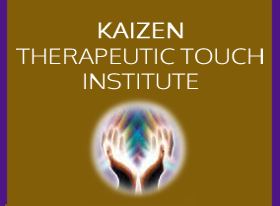 There is much literature in circulation today about the growing use of complementary and alternative therapies for stress relief and healing. There is also a great deal of confusion about the many diverse complementary and alternative therapies available and what sets them apart from each other and how to make sense of the many services. Language terms are often used interchangeably when there are, in fact, distinct differences.
There is much literature in circulation today about the growing use of complementary and alternative therapies for stress relief and healing. There is also a great deal of confusion about the many diverse complementary and alternative therapies available and what sets them apart from each other and how to make sense of the many services. Language terms are often used interchangeably when there are, in fact, distinct differences.
HOLISTIC HEALTH CARE & COMPLEMENTARY THERAPIES
Complementary therapies fall under the umbrella of holistic health care. This is a wellness model which recognizes the integration of body, mind and spirit and views health as a state of balance where the person is seen as an integrated whole, in all aspects of function, both internally and externally. The body, mind, spirit connection recognizes life as a whole, the individual’s inherent healing ability and takes into consideration, how one responds to and interacts with their personal and the universal environment. When a person is considered as a whole, we recognize that whatever affects one part of the person, affects all his/her other parts. The wellness model also recognizes that there is an inherent direction towards order within the body.
Complementary therapies differ from alternative therapies in that they work in conjunction with the existing medical model rather than as an independent alternative. They serve to enhance the existing treatment regime and are well-recognized and accepted by the medical system.
POPULAR DEMAND
Statistics are demonstrating an increase in public demand for the use of complementary therapies in Canada today. Canadians are more and more willing to pay ‘out-of-pocket’ to receive the kind of care they are discovering is effective, gentle and non-invasive.
The other side of these statistics suggest that the current medical approach tends to focus on the disease rather than the person and their sense of well being. It also does not seem to adequately value the effect of stress on the health of Canadians in their day to day lives, who are turning to the use of complementary therapies at their own expense, in increasing numbers.
Stress can be one of the leading causes of illness and accidents in the home and the workplace. There is a direct connection between the demands placed upon one’s life and the physical and mental health of the individual. Demands placed on many in society today are the type of stressors that can lead to over-extension of the body’s ability to function well. Stress relief and self care are important components to overall health and well being and help to promote safe, healthy home and workplace environments.
WELLNESS
Wellness can be defined as a state where one functions at one’s optimum level having an integrated body, mind and spirit. Wellness is a state of being that is happy, healthy and whole, in which one sees meaning and purpose in life.
At any given time in one’s life, we can find ourselves in life-altering circumstances that affect our well-being. To adequately address the needs of someone at such a time, requires recognition of the impact of the situation on the whole person and their environment. By doing so, awareness of a sense of well being is created within the framework of the changing situation. That same sense of awareness then contributes to enabling a healing process.
WHAT IS THERAPEUTIC TOUCH™?
Therapeutic Touch is complementary modality. It is a contemporary interpretation of ancient healing practices based on the laying on of hands. It is a consciously directed process whereby the Therapeutic Touch practitioner aims to rebalance the individual’s energy field and enhance their natural healing process. Therapeutic Touch, points the way towards evolutionary changes in the way health care may evolve in the 21st century. Learn more
By Susan Keith with Julia von Flotow
April, 2011





